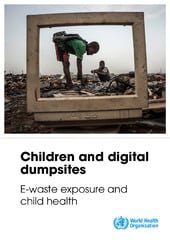Blog
June 18th Current Affairs
- June 18, 2021
- Posted by: admin
- Category: Culture Current Affairs Daily News Defense & Security Disaster Management Economy Education Environment & Ecology Ethics Geography Governance Health History International Relation Persons in News Polity Science & Technology Social Issues Sports Uncategorized UPSC Notification Videos
1. Changes in Cable Television Network Rules.

IN NEWS:
The Central Government issued a notification amending the Cable Television Network Rules, 1994 thereby providing a statutory mechanism for redressal of grievances/complaints of citizens relating to content broadcast by television channels in accordance with the provisions of the Cable Television Network Act, 1995.
KEY POINTS:
- It provides for a three-level grievance redressal mechanism — self-regulation by broadcasters, self-regulation by the self-regulating bodies of the broadcasters, and oversight by an Inter-Departmental Committee at the level of the Union government.
Significance:
- Various Self-regulatory bodies like News Broadcasters Standards Authority (NBSA) and Broadcasting Content Complaints Council (BCCC) will get legal recognition.
- At present, there is an institutional mechanism by way of an Inter-Ministerial Committee to address grievances of citizens relating to violation of the Programme/Advertising Codes under the Rules.
- Various broadcasters have also developed their internal self-regulatory mechanism for addressing grievances.
- There are over 900 television channels that have been granted permission by the Ministry of Information and Broadcasting (MIB).
- The recent notification is significant as it paves the way for a strong institutional system for redressing grievances while placing accountability and responsibility on the broadcasters and their self-regulating bodies.
- This will bring the television’s self-regulatory mechanism at par with that being set-up for OTT players and digital news publishers, as envisaged in the Information Technology (Intermediary Guidelines and Digital Media Ethics Code) Rules, 2021.
SOURCE:PIB
2. OFB corporatisation gets Cabinet approval
IN NEWS:
The Union Cabinet approved a plan to corporatise the Ordnance Factory Board (OFB).
OFB has 41 factories which will be divided into seven fully government owned corporate entities on the lines of Defence Public Sector Undertakings (DPSU).
KEY POINTS:
- Once implemented, the OFB will cease to exist.
- There will be no change in service conditions of the employees
Benefits of the approval
- Make the country self-sufficient in defence manufacturing
- Transform the ordnance factories into productive and profitable assets,
- Deepened specialisation in the product range
- Enhanced competitiveness
- Improved quality
- Help in overcoming various existing shortcomings like eliminating inefficient supply chains
SOURCE:TH
3. Children and Digital Dumpsites Report released by WHO

IN NEWS:
The World Health Organization (WHO) in its recent report “Children and Digital Dumpsites” has highlighted the risk that children working in informal processing are facing due to discarded electronic devices or e-waste.
KEY POINTS:
- It is the first ever WHO report on electronic waste and child health.
- E waste refers to old, end-of-life or discarded electronic items and their parts.
- Around 12.9 million women are working in informal waste sector exposing them to toxic e-waste (like Nickel, lead and Mercury) and put them and their unborn children at risk.
- Children exposed to e waste are particularly vulnerable to the toxic chemicals they contain due to their smaller size, less developed organs and rapid rate of growth and Development.
- Suggestions
- Environmentally sound disposal of e-waste and safety of workers.
- Monitor e waste exposure and health outcomes.
- Facilitate better use of e waste
Important Information:
- According to UN Global e waste monitor 2020 53.6 million metric tonnes of e waste was generated worldwide in 2009.
- Out of this, only 17.4% of e waste was collected and recycled.
- India is the third largest electronic waste generator after China and USA.
- In 2016 India enacted E waste (Management) Rules under which e Waste is categorised under two broad categories: Information technology and Telecommunications equipment and consumer electrical and electronic.
SOURCE:IE
4. Inland Vessels Bill
IN NEWS:
Union Cabinet has approved the Inland Vessels Bill, 2021, which will replace Inland Vessels Act, 1917.
KEY POINTS:
- As of now, total 4,000 km inland waterways have been operationalized.
- Bill will regulate safety, security and registration of inland vessels.
- Bill provides for a unified law for entire India instead of separate rules framed by each States.
- Bill grants certificate of registration which will be valid in all States and Union Territories. No separate permissions will be required from States.
- Bill provides for a central data base to record details of vessel, vessel registration and crew on an electronic portal.
- Central database would require all mechanically propelled vessels to be mandatorily registered.
- Non-mechanically propelled vessels will also require to be enrolled at district, taluk or panchayat or village level.
- India has about 14,500 km of navigable waterways comprising of rivers, canals, backwaters and creeks. It is a fuel-efficient and environment-friendly mode of transportation. Under National Waterways Act 2016, 111 waterways have been declared as National Waterways.
SOURCE:TH
